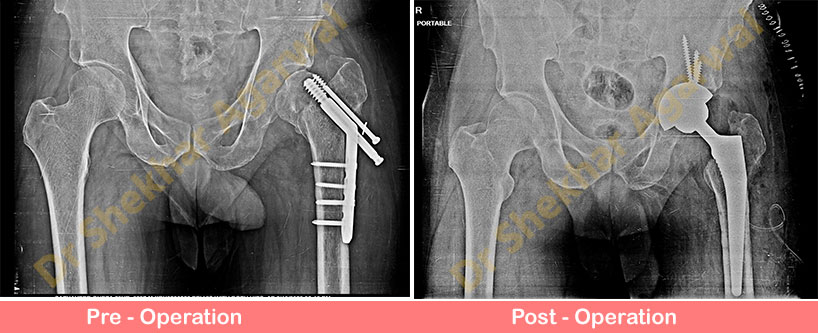Heart surgery is a life-changing procedure that demands meticulous planning, expert care, and access to a world-class medical facility. With so many hospitals in Delhi NCR offering cardiac care services, selecting the best hospital for heart surgery can feel overwhelming.
Making the right choice is crucial to ensure optimal outcomes and a smooth recovery. To help you make an informed decision, we are here to guide you through the key factors that should be considered when choosing the best heart care hospital in Delhi NCR. Let us help you prioritize your heart’s health.
Expertise of Cardiologists and Cardiothoracic Surgeons
At Sant Parmanand Hospital, our expert team of cardiologists and surgeons offers comprehensive cardiac care. From routine check-ups to complex procedures like angioplasty and bypass surgery, we’re committed to restoring your heart health. Our state-of-the-art technology and personalized approach ensure the best possible outcomes. Committed to excellence, our team consistently delivers outcomes that restore health and improve lives, making Sant Parmanand Hospital a trusted destination for world-class cardiac care.
State-of-the-Art Infrastructure and Equipment
The best cardiac center in Delhi should be equipped with cutting-edge infrastructure that meets the highest standards of medical care. This includes advanced diagnostic equipment for precise evaluations, state-of-the-art operating rooms designed for complex procedures, and well-equipped intensive care units (ICUs) for comprehensive post-operative care.
We at Sant Parmanand provide you with a robust infrastructure that not only ensures the successful execution of complex cardiac procedures but also enhances patient safety and recovery outcomes. When choosing a cardiac center prioritize facilities that invest in the latest technology and maintain a seamless integration of expertise and innovation for superior cardiac care.
Range of Cardiac Services and Procedures
Choose a hospital that provides a comprehensive range of cardiac services to ensure all your needs are met under one roof. Look for services such as coronary artery bypass grafting (CABG), heart transplantation, valve repair, and minimally invasive procedures.
At Sant Parmanand Hospital, we offer a comprehensive range of cardiac services, including advanced diagnostic procedures like ECG, ECHO, and stress tests. Our expert cardiologists provide specialized treatments for various heart conditions, such as coronary artery disease, valvular heart disease, arrhythmias, and heart failure. We offer minimally invasive procedures like angioplasty and stenting, as well as complex surgeries like bypass surgery and valve replacements. Our commitment to patient care ensures a seamless experience, from diagnosis to recovery.
Patient Care and Support Services
Evaluate the hospital’s patient care services, including nursing care, pain management, and rehabilitation programs. Also, consider the availability of support services, such as counseling, dietetics, and spiritual care. A compassionate and supportive environment can significantly contribute to a patient’s recovery and overall well-being.
Additionally, inquire about the hospital’s infection control measures and hygiene standards. A clean and hygienic hospital environment can reduce the risk of post-operative infections and other complications. We at Sant Parmanand, prioritize these aspects, addressing both the physical and emotional needs of our patients.
Success Rates and Patient Outcomes
Researching a hospital’s success rates and patient outcomes for heart surgery is crucial in determining the quality of care they provide. Look for data on mortality rates, complication rates, and patient satisfaction scores. This information will help you gauge the hospital’s expertise in performing complex heart surgeries, managing post-operative care, and ensuring patient safety.
A hospital with low mortality rates, minimal complications, and high patient satisfaction scores is likely to provide exceptional heart care.
Location and Accessibility
Consider the hospital’s location and accessibility when choosing the best heart care hospital in Delhi NCR. Ensure it is conveniently located, with ample parking and reliable transportation options. This will make it easier for you and your family to access the hospital during your treatment, reducing stress and anxiety.
A hospital with nearby accommodations and amenities can also provide comfort and support during your recovery. Prioritize your convenience and well-being by selecting a hospital with a prime location.
Choose the Best Heart Care Services with Sant Parmanand
Choosing the best hospital for heart surgery in Delhi NCR is a significant decision that impacts your overall health and recovery. With numerous healthcare facilities offering cardiac care, making the right choice requires thorough evaluation and careful consideration.
At Sant Parmanand, we take pride in being part of one of the best heart care hospitals in Delhi NCR. Here, we are staffed with renowned cardiologists and cardiothoracic surgeons, each bringing extensive experience in performing complex cardiac procedures. Our commitment to excellence and patient care ensures that every individual receives the best possible treatment for their heart health. Our comprehensive range of cardiac services includes advanced diagnostic procedures like ECG, ECHO, and stress tests. Our expert cardiologists provide specialized treatments for various heart conditions, such as coronary artery disease, valvular heart disease, arrhythmias, and heart failure, and take care of you at each step.
If you are looking for the best cardiologist in Delhi NCR, we are here to help you. With our top-notch heart care services and treatment, we are the helping and healing hands you need. We believe in ensuring that our patients always receive high-quality, safe treatments. Visit us at Civil Lines, Kashmiri Gate, and let’s discuss your heart health.
Book your appointment today to know more.





















